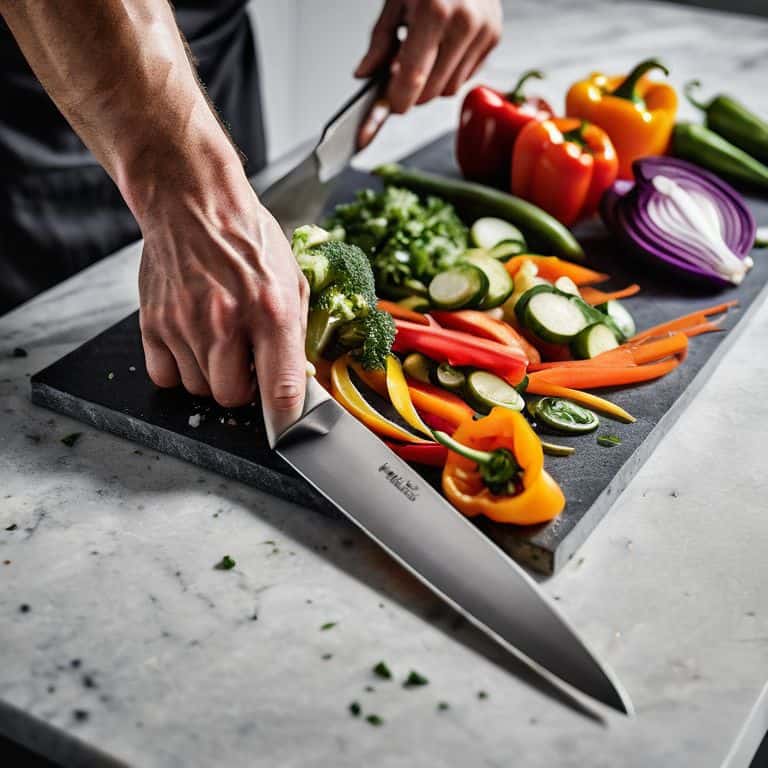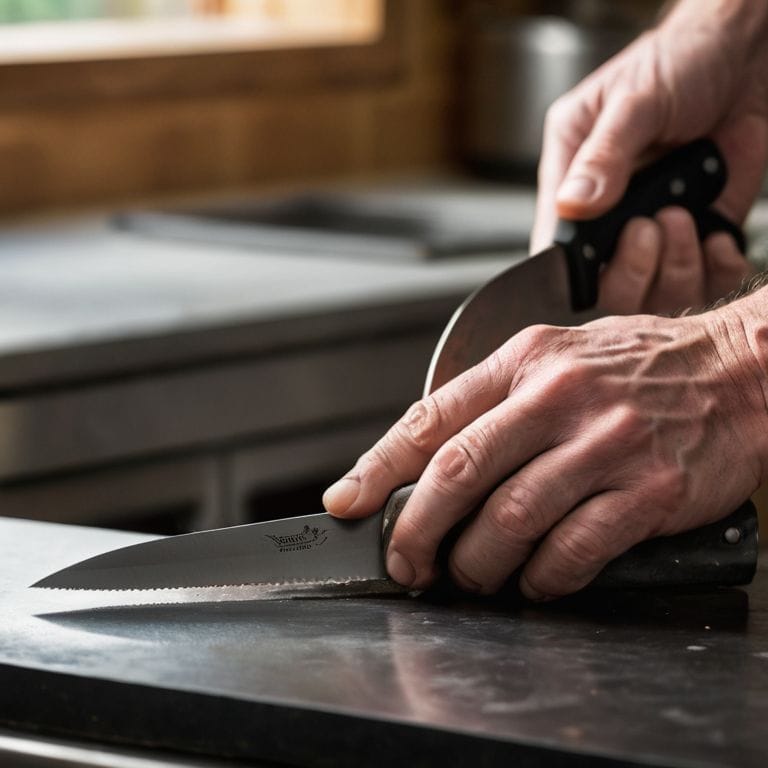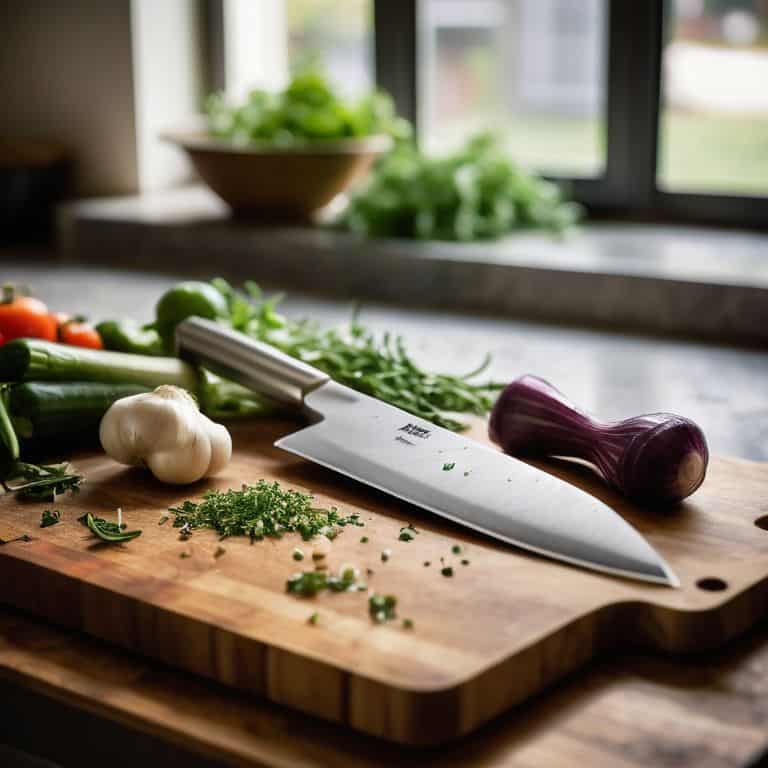I still remember my first flight lesson as a student pilot, where my instructor taught me that navigation is key, not just in the skies, but also in the kitchen. I was struggling to chop vegetables for a simple salad, and my instructor, noticing my frustration, shared with me the importance of mastering a guide to knife skills. He compared it to navigating through turbulence – with the right techniques, you can smoothly glide through even the most challenging tasks. This lesson has stuck with me, and as a flight instructor myself, I’ve come to realize that understanding the fundamentals of knife work is essential for any aspiring chef or home cook.
As we embark on this journey to master a guide to knife skills, I promise to provide you with practical advice and step-by-step guidance. We’ll break down the complex world of knife work into simple, manageable chunks, just like a pre-flight briefing. You’ll learn how to choose the right knife, hold it with confidence, and apply various cutting techniques to achieve perfection. By the end of this article, you’ll be equipped with the knowledge and skills to tackle any recipe with ease, and you’ll understand how knife skills can be applied to other areas of life, just like the principles of flight.
Table of Contents
Guide Overview: What You'll Need

Total Time: 1 hour 30 minutes
Estimated Cost: $10 – $20
Difficulty Level: Intermediate
Tools Required
- Chef’s Knife (8 inches or 20 centimeters long)
- Cutting Board (made of wood or plastic, 12 inches x 18 inches)
- Sharpening Stone (optional, for maintaining knife sharpness)
Supplies & Materials
- Fresh Produce (various fruits and vegetables for practice)
- Meat (optional, for practicing meat-cutting skills)
Step-by-Step Instructions
- 1. First, let’s start with the fundamentals of knife handling, which is crucial for mastering knife skills. Just like a pre-flight checklist, we need to ensure our knife is in good condition, and we’re holding it correctly. Hold the knife with a firm, but not overly tight, grip, placing your thumb on the blade and wrapping your fingers around the handle.
- 2. Next, we need to choose the right knife for the job, which is similar to selecting the right aircraft for a mission. For most kitchen tasks, a chef’s knife or a paring knife will be your go-to tools. Remember, the right tool for the job makes all the difference in efficiency and safety.
- 3. Now, let’s move on to knife safety, which is just as important as navigating through turbulent airspace. Always cut away from your body, and keep your fingers curled under, out of the way of the blade. This will help prevent any accidents and ensure a smooth cutting experience.
- 4. To begin cutting, place the knife at a 45-degree angle to the ingredient, with the blade facing the direction you want the cut to go. Apply gentle pressure, using a smooth, rocking motion to slice through the ingredient. This technique is similar to using the rudder to steer an aircraft, where smooth and gentle inputs are key.
- 5. As you continue to cut, focus on maintaining a consistent cutting motion, which will help you develop muscle memory and improve your overall knife skills. Just like flying an aircraft, repetition and practice are essential to becoming proficient.
- 6. When cutting through tougher ingredients, such as meat or dense vegetables, use a sawing motion to help the knife glide through more easily. This is similar to using the flaps to slow down an aircraft during landing, where you need to make adjustments to maintain control.
- 7. Finally, to hone your knife skills, practice cutting different ingredients, such as onions, carrots, and herbs. As you become more comfortable with the knife, try more complex cuts, such as julienning or mincing. Remember, practice makes perfect, and with time and patience, you’ll become a skilled knife handler, just like a seasoned pilot navigating through challenging weather conditions.
A Guide to Knife Skills

As we delve deeper into the world of knife skills, it’s essential to discuss knife sharpening techniques. A sharp knife is not only safer to use, but it also makes the cutting process more efficient. I like to think of sharpening a knife as navigating through a narrow mountain pass – it requires precision and patience. By mastering the art of sharpening, you’ll be able to tackle even the toughest ingredients with ease.
When it comes to proper knife handling, it’s all about feeling comfortable with the weight and balance of the knife. Just as a pilot needs to be familiar with the controls of an aircraft, a cook needs to be familiar with the grip and movement of their knife. This will allow you to make common knife cuts with confidence, from chopping vegetables to slicing meat. Remember, practice makes perfect, so don’t be afraid to experiment and find what works best for you.
In addition to proper handling, knife maintenance tips are crucial to extending the life of your knife. Regular cleaning and storage can make all the difference in keeping your knife in top condition. I also recommend investing in a good cutting board safety device, such as a non-slip mat, to prevent accidents in the kitchen. By following these tips and practicing your skills, you’ll be well on your way to becoming a skilled cook, ready to take on any recipe that comes your way.
Mastering Knife Sharpening Techniques
Mastering knife sharpening is like fine-tuning your aircraft’s propeller – it requires patience and the right touch. A sharp knife is not only safer, but it also makes food preparation more efficient. To start, choose the right sharpening tool, such as a whetstone or sharpening steel. Hold the knife at the correct angle, typically between 20 to 30 degrees, and slowly draw it across the stone. Repeat this process several times, checking the edge for sharpness.
As you sharpen, remember that consistency is key, just like maintaining a steady altitude. Apply gentle pressure, increasing as needed, and always sharpen in the same direction. With practice, you’ll develop a sense of when your knife is razor-sharp, ready to tackle any culinary challenge that comes your way.
Proper Knife Handling for Safe Landings
Proper knife handling is akin to navigating an aircraft through dense airspace – it requires attention to detail and a steady hand. Just as a pilot must maintain control of the plane’s altitude and airspeed, a chef must grip the knife correctly, balancing comfort and control. A firm, but not overly tight, grip is essential for safe and precise cuts.
As you chop, slice, or dice, remember to keep your fingers curled under and out of the knife’s path, much like how a pilot keeps the aircraft’s wings level during turbulence. This simple technique will help you avoid accidents and ensure a smooth “landing” for your ingredients, ready to be assembled into a delicious dish.
Navigating the Skies of Knife Work: 5 Key Tips to Soar
- Choose the Right Aircraft: Selecting the proper knife for the job is like choosing the right plane for your flight plan – it’s crucial for a safe and successful journey
- Pre-Flight Checklist: Always ensure your knife is sharp and ready for takeoff, a dull knife can lead to accidents and turbulence in the kitchen
- Plot Your Course: Understand the basic cuts and techniques, such as chopping, slicing, and dicing, to navigate through even the most complex recipes
- Maintain a Steady Altitude: Keep your knife at a consistent angle and apply gentle pressure, just like maintaining a steady altitude in flight
- Land Safely: Always cut away from your body and keep your fingers curled under, just like landing a plane safely on the runway, it’s all about control and precision
Key Takeaways for Mastering Knife Skills
Mastering knife skills is a process that requires patience, practice, and the right techniques, much like navigating through turbulence in aviation
Proper knife sharpening and handling are crucial for safe and efficient food preparation, just as pre-flight checks are essential for a smooth flight
By following a step-by-step approach to knife skills, similar to a pre-flight briefing, you can build confidence and become proficient in the kitchen, ready to tackle any recipe with ease
Navigating the Skies of Culinary Mastery
Just as a well-tuned propeller slices through the air with ease, a sharp knife glides through ingredients with precision – mastering knife skills is the key to unlocking a world of culinary possibilities, one delicious flight at a time.
Daniel Sato
Landing Safely with New Knife Skills

As we conclude this guide to knife skills, let’s do a quick preflight check to ensure we’ve covered all the essentials. We’ve navigated through the step-by-step instructions for mastering knife skills, explored the importance of mastering knife sharpening techniques, and discussed proper knife handling for safe and efficient use. By following these guidelines, you’ll be well on your way to becoming a skilled chef, capable of tackling even the most complex recipes with confidence.
Remember, the key to improving your knife skills is consistent practice. Don’t be discouraged if you don’t see improvement right away. With time and patience, you’ll develop the muscle memory needed to chop, slice, and dice like a pro. So, keep practicing, and always keep in mind that the art of cooking is not just about following a recipe, but about the journey of creation and the joy of sharing a delicious meal with others.
Frequently Asked Questions
What are the most common mistakes to avoid when sharpening a knife?
When sharpening a knife, avoid applying too much pressure, which can damage the blade. Also, don’t sharpen at too steep an angle, as this can lead to uneven edges. Think of it like navigating a plane through rough air – smooth, gentle movements are key to a safe and successful landing, or in this case, a sharp knife.
How do I properly store my knives to maintain their sharpness and prevent accidents?
Storing knives is like securing your aircraft for a storm – you want to protect them from damage and ensure safe handling. I recommend a dry place, away from children, with knives in a designated block or on a magnetic strip, keeping them sharp and preventing accidents, just like tying down a plane prevents damage from strong winds.
Can I use any type of cutting board or are there specific materials that are recommended for safe and effective knife work?
Just like choosing the right runway, selecting the right cutting board material is crucial. I recommend wood, bamboo, or plastic boards – they’re gentle on knives and provide a stable surface. Avoid glass or marble, they can be slippery and damage your blade. Think of it as navigating through instrument meteorological conditions, you want a clear and stable path to your destination.
